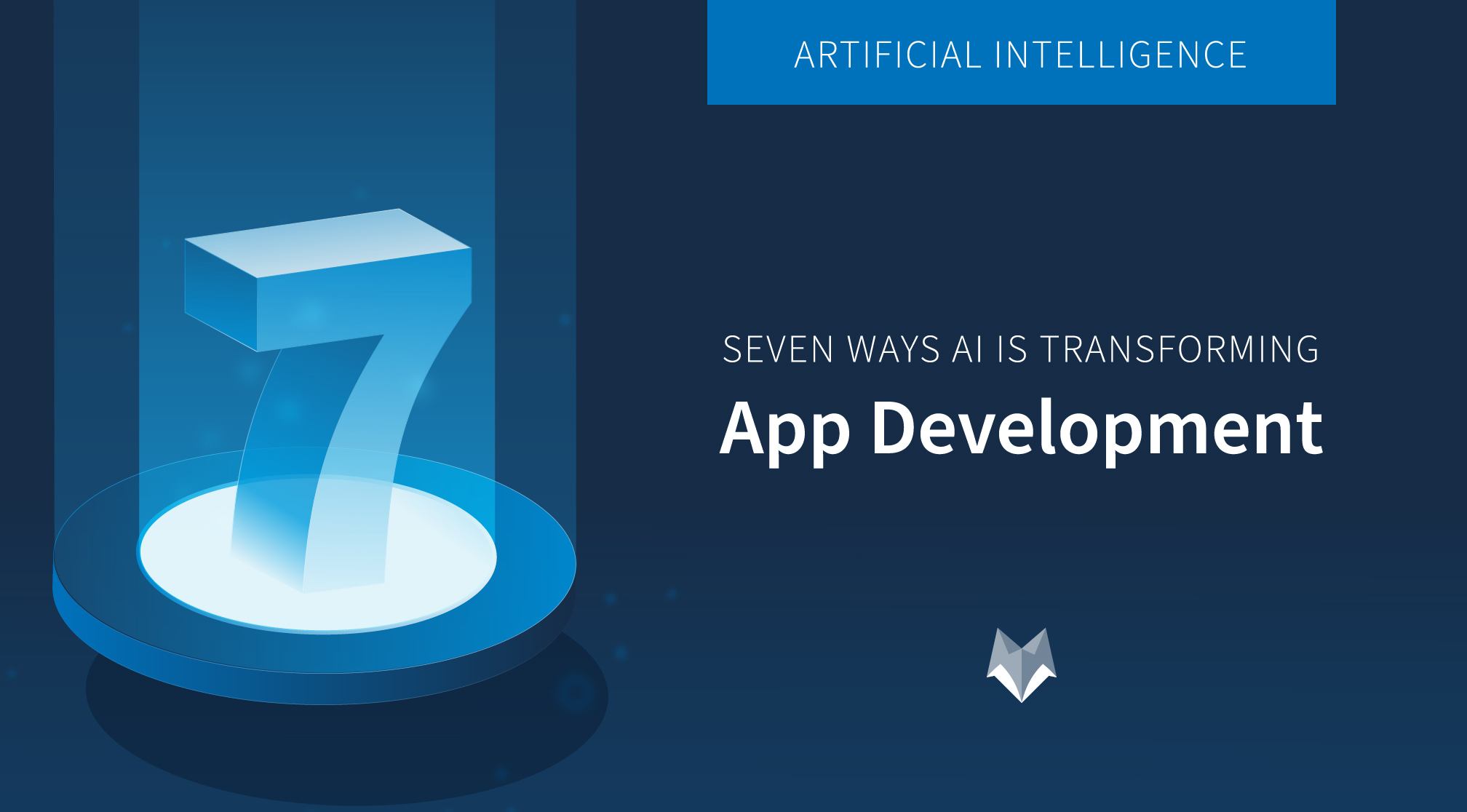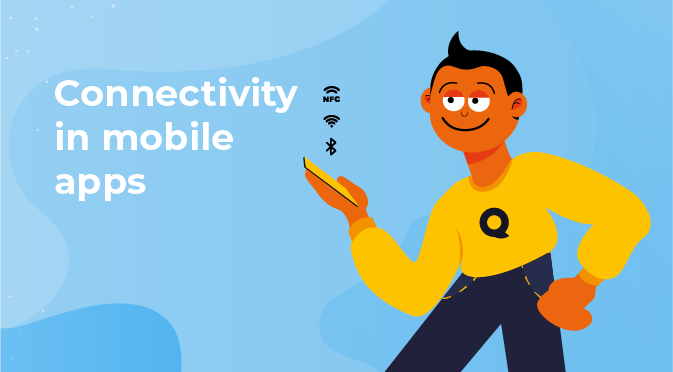
How to plan for growth: Designing app user journeys that’ll help you scale
Posted on February 24th, 2021
This guest-post is courtesy of our partners at Input Logic.

This guest-post is courtesy of our partners at Clevyr.
The future of technology is AI and the future of AI is mobile. The latest data shows that the market size of artificial intelligence was valued at $27.23 billion in 2019, this figure is projected to reach $266.92 billion by 2027 (Fortune Business Insights, 2020). Apple and Google are betting big that mobile will play a significant part in the growth and adoption of AI by mainstream consumers: In 2017, Apple and Google both unveiled extra chips specifically engineered to power AI applications on their mobile devices. Both companies have spent resources heavily in this space, developing both hardware and software APIs to enable programmers to more easily develop AI-powered applications on their mobile devices.
First let’s get some confusing terminology out of the way: Artificial Intelligence vs Machine Learning. Artificial intelligence (AI) is a broad term that encompasses the general idea that machines can be made to emulate or mimic human capabilities in a “smart” way. In other words, machines can be made to perform tasks that have traditionally been the purview of humans. Machine learning (ML), on the other hand, is the art and science of allowing machines to act intelligently by learning from data and experience. In practice, most AI systems today are built with ML algorithms. It’s usually easier to let a machine learn how to do a complex task rather than try to program every single rule and exception it would need to know, in order to do the task from scratch!
AI Technology Being Used In Mobile App Development
#1
Digital Twinning - A digital twin is a digital replica of a living or non-living physical entity. Digital twin refers to a digital replica of potential and actual physical assets, processes, people, places, systems, and devices that can be used for various purposes, usually involving simulation & predictive modeling.
Today, Digital Twinning is utilized in industrial manufacturing and logistics in order to simulate and optimize complex physical processes, however, looking forward, Digital Twinning has lots of potential in the mobile app space. In fact, your smart-phone can almost already be thought of as your digital twin: It often knows where you are, where you’ve been, who your friends/family are, what your health is, what your finances are like, etc. Apps like Google Maps use this data to predict where you are going and offer route suggestions! Currently, all this data is disparate, but the future of mobile apps leveraging Digital Twinning will certainly involve aggregating and consolidating all of that disparate data. That data, which essentially represents ‘you’ is then using this information as a powerful predictive model that helps you organize your life and make helpful suggestions.
#2
Optical Character Recognition - While this technology is not exactly new, with usable implementations being in practical use for over two decades now, Optical Character Recognition (OCR) is widely used and is becoming an essential tool for personal and business use. OCR refers to the ability of computer-vision algorithms to recognize text in images (such as photos or scanned documents) and process it into more traditional machine-readable formats. There are a wide variety of applications for this technology, especially in business and banking, where large volumes of scanned document data can be quickly ingested into core business applications/systems. With the recent rise of modern Deep Learning machine-learning techniques, OCR has become more accurate and useful. On mobile devices, OCR can be used to log and automatically enter data from receipts, bills, etc, to help you keep track of your finances.
#3
Biometrics - Biometrics are body measurements and calculations related to human characteristics. Biometric authentication is used as a form of identification and access control. It is also used to identify individuals in groups that are under surveillance.
Fingerprint scanners, iris recognition, hand geometry, and behavioral characteristics are all types of biometric data used in Biometric processes. In day-to-day use, you may be familiar with the Face ID technology from Apple on your iOS device. The TrueDepth camera in Apple mobile phones captures accurate face data by projecting and analyzing over 30,000 invisible dots to create a depth map of a face and also captures an infrared image of the scanned face. A portion of the neural engine of the A11, A12 Bionic, A12X Bionic, and A13 Bionic chip transforms the depth map and infrared image into a mathematical representation and compares that representation to the enrolled facial data. Biometric authentication is another layer of authentication you can use in your apps to protect sensitive data.
#4
Natural Language Processing - Natural language processing (NLP) is a subfield of linguistics, computer science, and artificial intelligence concerned with the interactions between computers and human language, in particular how to program or teach computers to process and analyze large amounts of natural language data. Natural language refers to the normal, everyday speech and text that humans use to communicate with each other.
Natural language processing enables computers to communicate with humans in their own language and to process and search large volumes of unstructured data, like scanned documents, websites, Twitter, and other social media. For example, any time you use voice-commands with smart-phones or a virtual assistant like Alexa, Cortana, or Google Assistant you are interacting with an NLP system. Furthermore, any time you interact with a chatbot, there is almost certainly some NLP technology involved. The following 3 technologies are all examples of or enabled by, NLP: Sentiment Analysis, Speech Recognition Technology, and Chatbots/Virtual-Assistants.
#5
Sentiment Analysis - Sentiment Analysis (SA) is becoming a common use-case of NLP. SA is the process of automatically gleaning high-level insights from unstructured data feeds, such as Reddit, Twitter, Movie or Amazon Reviews, etc. In its simplest form, SA gives a “positive”, “neutral” or “negative” rating to a piece of human-written content, such as a product review or tweet. In aggregate, this technique is used as another tool to help businesses monitor customer sentiment towards brands and understand consumer needs. It’s also been used as another tool for making stock-market predictions. SA has great potential in Brand Monitoring, Customer Service & Market Research. In the mobile space, SA has been used to automatically monitor app reviews for trends to spot problem areas early and improve the product.
#6
Speech Recognition Technology - Speech recognition, or speech-to-text, is the ability of a machine or program to identify words spoken aloud and convert them into readable text. Rudimentary speech recognition software has a limited vocabulary of words and phrases, and it may only identify these if they are spoken very clearly. More sophisticated software has the ability to accept natural speech, different accents, and languages. Speech recognition was the first practical use-case of modern Deep Learning technology.
Speech recognition forms the backbone of any NLP system that relies on spoken language as input. Smart-phones, digital assistants, and automated customer service systems all rely on Speech recognition to transform spoken language into a form the underlying NLP system can further process. Speech recognition is also used in automated transcription (for instance to create captions in YouTube videos), note-taking, virtual meeting notes, etc.
#7
Chatbots/Virtual-Assistants - A chatbot is a computer program that simulates human conversation through voice commands or text chats or both. Chatbot, short for chatterbot, is an Artificial Intelligence (AI) feature that can be embedded and used through any major messaging applications. Chatbots are the core feature of virtual assistants that are becoming increasingly ubiquitous on the web and mobile platforms.
Everyone is familiar with the chat bubbles that appear on websites when browsing the internet, ready to assist with questions about their website. When this same technology is integrated into a mobile application, it can improve the customer experience and conversion rate. Chatbots and virtual assistants have been integrated into mobile applications of all sorts, from operating systems to banking apps.
Building AI in Mobile Apps
Now that you have insight into the latest tech trends used to enhance the business value of mobile applications, what happens after the AI-powered tech is released into the wild? Naturally, artificial intelligence continues to play a significant role in the ongoing marketing of the app, app store optimization, reviews, and application security! Need help with all of the above? We can help! We have created, enhanced, and deployed numerous mobile application projects incorporating all forms of artificial intelligence.
About The Author
Dustin Reagan, Senior AI Expert at Clevyr with a BA in Psychology from Princeton University. Dustin has over 20 years of experience in the technology industry including 7 years involved in AI/ML, leading numerous AI development projects, and is a Historical European Martial Arts (HEMA) champion. Dustin won the United States Fencing Association (USFA) NAC-Cadet championship, and he fenced several international events in England, Germany, France, and Italy.

This guest-post is courtesy of our partners at Input Logic.

Today nobody can imagine life without smartphones. They connect us with our friends and family, and provide entertainment and access to social media. That is why mobile phones have become an integral part of everyday life.

Mobile technology and the accessibility of smartphones and other mobile devices allowed for the convenience of instant access to live streaming and video content that could be viewed from a screen in the palm of your hand.